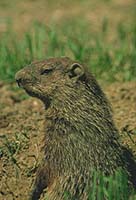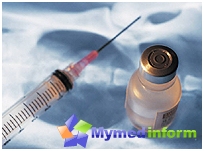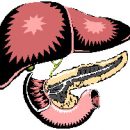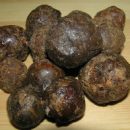Most often, Omsk hemorrhagic fever suffer hunters on the ondatr, eye handlers, residents of Omsk and Novosibirsk regions. But if you are going to go to these areas, it is better to learn about the disease in advance.
Content
About the causative and illness
 Omsk hemorrhagic fever - acute viral disease, characterized by natural foci (the presence of foci with constant habitat), fever, hemorrhagic syndrome and damage to the nervous system.
Omsk hemorrhagic fever - acute viral disease, characterized by natural foci (the presence of foci with constant habitat), fever, hemorrhagic syndrome and damage to the nervous system.
The pathogen refers to the group of arboviruses, the Togaviridae family, the family of Flavivirus (group B).
The first descriptions of Omsk hemorrhagic fever were made by local doctors in the Omsk region in the period from 1940 to 1945. (B. NS. Periushin, G. BUT. Sizemova and DR.). Since 1946. Omsk hemorrhagic fever highlighted in an independent nosological form.
It was found that the main reservoir of infection is a narrow-bar wheel, and a mite power carrier.Pictus. Another transmission of infection was contact. The disease occurred after contact with Ondatra (the local population knew about it and even was the name «ondatrop disease»).
Natural foci of Omloric hemorrhagic fever have been identified in the steppe and forest-steppe areas of the Omsk, Novosibirsk, Tyumen, Kurgan, Orenburg regions. The reservoir of infection in nature are mainly water rat, red wheels, ondatra, and ticks D.Pictus, D.Marginatus, which can transmit virus to offspring through eggs (serval). Omsk hemorrhagic fever is not transmitted from man to man.
What's happening
The virus penetrates through the skin at the site of the tick bite or fine skin damage, infected with the ondatra or water rat. The virus penetrates into blood, spread through blood throughout the body and affects predominantly vessels, nervous system and adrenal glands.
Hidden period of illness - continues from 2 to 4 days.The disease begins suddenly, the body temperature rises and already in the first day it reaches 39-40°WITH. Overall, intense headache, pain in the muscles of the whole body appear.The body temperature keeps at a high level of 3-4 days, then slowly decreases to the 7-10th day of the disease. Fever rarely lasts less than 7 or more than 10 days. Almost half of the half have repeated waves of fever (relapses), more often on the 2-3rd week from the beginning of the disease and continue from 4 to 14 days. Total disease duration from 15 to 40 days.
Already from the 1st day of the day the disease almost everyone appears hemorrhagic rash. The skin of the face, neck and upper sections of the chest hyperemic (redness), the face is thought-out. Nasal bleeding, naked bleeding, pulmonary, intestinal, uterine. When establishing a disease, take into account the prerequisites (stay in the area where fever, seasonality, tick attack, contacts with rodents, incidence rate, etc.) and characteristic manifestations of the disease (a sudden beginning, early manifestation of bleeding and so on.).
What to do
It is necessary to comply with personal protection against tick attack. Use a vaccine against tick-borne encephalitis, since the causative agent of tick-borne encephalitis is similar to properties from the pathogens of the Omsk hemorrhagic fever, after vaccination there are persistent immunity.
No special treatment. Treatment is aimed at supporting the vital functions of the body - breathing, blood circulation, brain, kidney, lungs.
When similar with the disease, symptoms - be sure to apply to the doctor!









